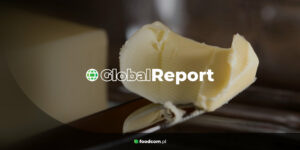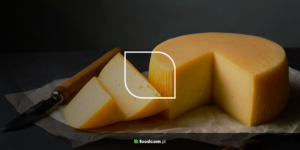- Globalny rynek serów rósł stabilnie na początku 2024 r., napędzany zwiększonym popytem na sery premium i specjalistyczne.
- Pomimo wahań kosztów surowców, ogólne ceny serów pozostały stabilne ze względu na wysoki poziom produkcji.
- Zainteresowanie konsumentów serami ekologicznymi i wysokiej jakości pobudziło innowacje rynkowe i konkurencję.
Globalny rynek serów kontynuował stały wzrost w pierwszej połowie 2024 r., napędzany rosnącym popytem na produkty mleczne i zmianami preferencji konsumentów w kierunku bardziej zróżnicowanych produktów wysokiej jakości. Znaczący wzrost zaobserwowano w sprzedaży serów premium i specjalnych, a także w segmencie ekologicznym. Pomimo pewnych wyzwań, takich jak zmienne warunki pogodowe i wahania cen mleka, sektor serów wykazał się odpornością i szybko się rozwijał.
Dynamika rynku
W pierwszej połowie 2024 r. rynek sera doświadczył kilku znaczących zmian i trendów.
Po okresie świątecznym ceny serów takich jak Gouda i Edam uległy korekcie, ale pozostały stabilne, co wskazuje na utrzymujący się popyt. Zauważalne były również okresowe spadki cen, zwłaszcza w ofertach od handlowców, co mogło wynikać z prób utrzymania konkurencyjności na rynku. Ceny mozzarelli pozostały stabilne, z niewielkimi wahaniami wynikającymi z sezonowych zmian popytu.
Presję na ceny zaobserwowano w lutym, ale późniejsze miesiące przyniosły stabilizację z niewielkimi wahaniami w zależności od rodzaju sera. Produkcja sera była wysoka, co mogło prowadzić do tymczasowej presji na ceny, zwłaszcza w przypadku sera Cagliata. Pomimo tych wahań, ogólna dynamika rynku była pozytywna, wskazując na stabilność i zdrowy popyt na ser.
Analiza rynku w pierwszej połowie 2024 r. dla poszczególnych rodzajów sera
Gouda
Po początkowych spadkach cen w styczniu, rynek sera Gouda wykazał stabilizację, a następnie wzrost. Ceny tego sera pozostawały stabilne przez większą część pierwszej połowy roku, a w kwietniu zaczęły wykazywać tendencję wzrostową. Wzrost ten był spowodowany rosnącym popytem na sery premium i zmieniającymi się preferencjami konsumentów w Europie i Ameryce Północnej.
Mozzarella
Ceny mozzarelli również wykazywały stabilność, z niewielkimi spadkami na początku roku, ale wzrosły w marcu i utrzymały się na wysokim poziomie do końca sześciomiesięcznego okresu. Popyt na mozzarellę był szczególnie wysoki w Europie Południowej, ze względu na sezonowy wzrost turystyki i popularność kuchni włoskiej. Wzrost popytu wpływa na stabilność cen, z niewielkimi wahaniami wynikającymi z sezonowych zmian w produkcji i zapasach.
Cagliata
Cagliata doświadczała okresowej presji cenowej, ale w kwietniu i maju odnotowano wzrost popytu i cen. Wzrost zainteresowania tym serem wynikał głównie z rosnącego popytu na surowce do produkcji innych serów. Stabilność cen w czerwcu wskazuje na zwiększony popyt i zrównoważenie podaży i popytu.
Edam
Rynek Edamu był stosunkowo stabilny w całym okresie, z niewielkimi spadkami na początku roku i stabilnością cen w kolejnych miesiącach. Stabilność ta wynikała z utrzymującego się popytu na ten rodzaj sera, zwłaszcza w Europie i Azji, gdzie Edam jest popularnym produktem.
Cheddar
Cheddar wykazywał pewne wahania cen na początku roku, ale ceny zaczęły się stabilizować od marca. W maju i czerwcu odnotowano wzrosty, co sugeruje rosnący popyt na ten rodzaj sera, szczególnie w Ameryce Północnej i Europie. Wzrosty były spowodowane rosnącymi kosztami produkcji i zwiększonym popytem na sery premium.
Zalecamy zapoznanie się z artykułem: Ser Cheddar – czym jest i jak wygląda produkcja?
Analiza regionalna rynku sera
Europa
Europa pozostaje kluczowym rynkiem dla większości serów, z wyraźnym popytem na Goudę, Mozzarellę i Edam. Wysoki popyt, zwłaszcza w Europie Południowej, spowodował wzrost cen, szczególnie w okresach turystycznych. Stabilna produkcja w krajach takich jak Holandia, Niemcy i Francja pomogła utrzymać rynek w równowadze.
Ameryka Północna
W Ameryce Północnej rynek sera wykazywał stabilność przy niewielkich wahaniach cen. Popyt na ser Cheddar był szczególnie wysoki w Stanach Zjednoczonych, Kanadzie i Wielkiej Brytanii. Innowacje produktowe i rosnące zainteresowanie serami premium przyczyniły się do wzrostu sprzedaży w tym regionie.
Azja
Zwiększona konsumpcja sera w Azji, w szczególności w Chinach i Indiach, pomogła zwiększyć globalny popyt. Rynki te wykazują coraz większe zainteresowanie importowanymi serami premium, co wpływa na wzrost cen i stabilność rynku. Rosnąca klasa średnia i zmieniające się nawyki żywieniowe są kluczowymi czynnikami napędzającymi ten trend.
Ameryka Łacińska
Ameryka Łacińska odnotowała umiarkowany wzrost popytu na sery, przy większym zainteresowaniu serami Cagliata. Region wykazuje rosnący popyt na sery ze względu na poprawiającą się gospodarkę i rosnącą popularność produktów mlecznych.
Trendy i prognozy
W pierwszej połowie 2024 r. rynek sera doświadczył dużej zmienności i nieprzewidywalności, głównie z powodu gwałtownych wzrostów cen surowców, takich jak masło i mleko. Spowodowało to wzrost kosztów produkcji serów takich jak Gouda i Mozzarella. Na szczęście stabilizacja cen na rynku mleczarskim przyniosła pewną ulgę producentom sera, umożliwiając lepsze planowanie.
Spadek Chin jako rynku eksportowego dla UE zmusił producentów do poszukiwania nowych rynków, zwiększając konkurencję w innych obszarach, takich jak Ameryka Północna i Azja Południowo-Wschodnia. Zwiększona konkurencja może wpływać na stabilność cen i wymuszać innowacje oraz poprawę jakości produktów.
Wysoki popyt na sery premium i ekologiczne świadczy o rosnącym zainteresowaniu konsumentów zdrową żywnością. Producenci, którzy są w stanie zaspokoić ten popyt, mogą zwiększyć swój udział w rynku i osiągnąć lepsze marże. Ograniczona wielkość produkcji może jednak prowadzić do niedoborów i dalszego wzrostu cen, zwłaszcza w okresach zwiększonego popytu sezonowego.
Podsumowując, rynek serów w pierwszej połowie 2024 r. był dynamiczny i pełen wyzwań, ale oferował również wiele możliwości. Stabilność cen, wysoki popyt na sery premium, malejące znaczenie Chin jako rynku eksportowego oraz innowacje w produkcji będą kluczowymi czynnikami napędzającymi rynek w nadchodzących miesiącach.
Global Reports od Foodcom S.A.
Ciekawi Cię, co dalej z rynkiem serów? Odkryj najnowsze trendy i spostrzeżenia, które będą kształtować nadchodzące miesiące 2023 roku. Odwiedź nasz blog, ponieważ regularnie aktualizujemy nasze globalne raporty. Bądź na bieżąco z Foodcom S.A.
![Przegląd rynku sera w 2025 [Global Report] Przegląd rynku sera w 2025 [Global Report]](https://foodcom.pl/wp-content/uploads/2024/07/Global-Report-Przeglad-rynku-sera-2024-1520x855.jpg)








